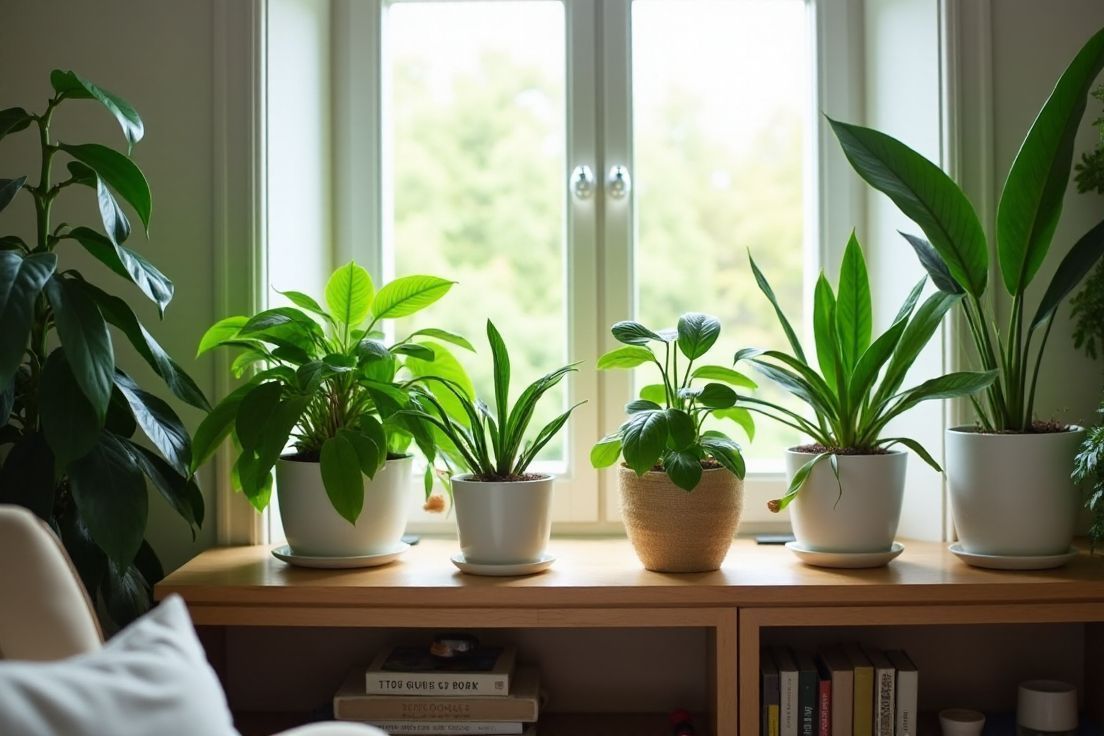
Are you thinking about adding some greenery to your home but unsure where to start? Houseplants can brighten up your space and even improve air quality, but not everyone has a green thumb.
Luckily, there are some fantastic plants that are super easy to care for, making them perfect for beginners. Whether you want a low-maintenance companion or just want to liven up your room, these houseplants can thrive with minimal effort.
Let’s explore the best options that can survive and flourish, even if you might forget to water them occasionally!
1. Spider Plant
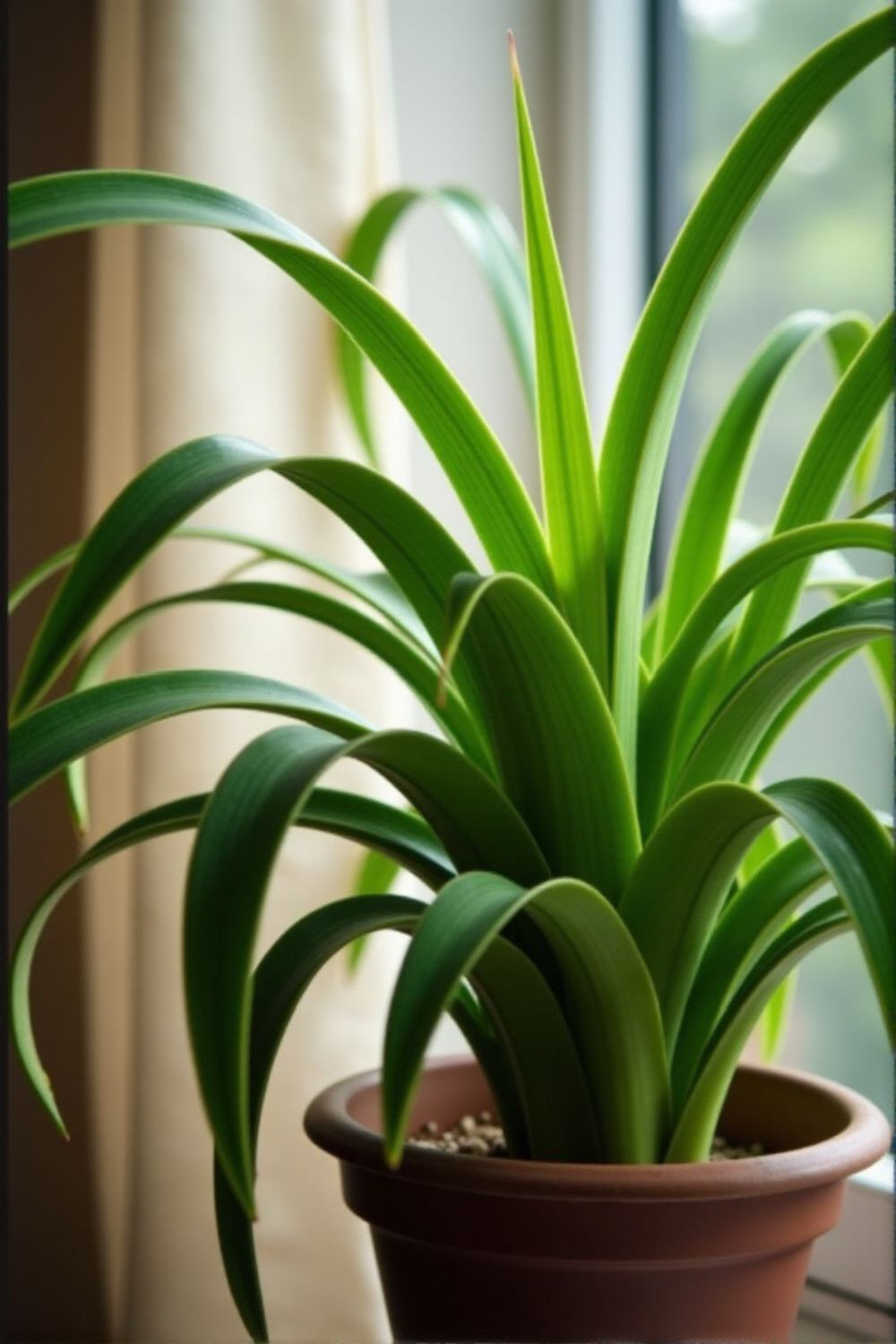
The Spider Plant, also known as Chlorophytum comosum, is a fantastic choice for beginners. Its long, arching leaves create a lovely display.
The Spider Plant is not only aesthetically pleasing but also easy to care for, making it an ideal houseplant for those new to gardening. Here are some key points about this remarkable plant:
- Hardy and resilient, suitable for various indoor conditions.
- Produces offshoots or “pups” that can be easily propagated.
- Excellent air purifier, removing toxins from your home.
- Tolerates low light, although it thrives in bright, indirect sunlight.
- Low water requirements; allow the soil to dry out between watering.
They are usually green with white stripes, which adds a touch of color to any room. One of the best things about Spider Plants is their ability to produce “baby” plants.
These little offshoots can easily be propagated, making it fun to share with friends or expand your own collection.
This plant thrives in various lighting conditions but prefers bright, indirect sunlight.
It’s quite forgiving, so don’t worry too much if you forget to water it occasionally. Just make sure the soil dries out slightly between waterings.
Too much moisture can cause the roots to rot.
Spider Plants are also known to help purify indoor air.
They can remove pollutants, making your living space healthier. With some love and care, your Spider Plant can grow quite large and produce many babies, making it a rewarding houseplant to keep.
2. Snake Plant
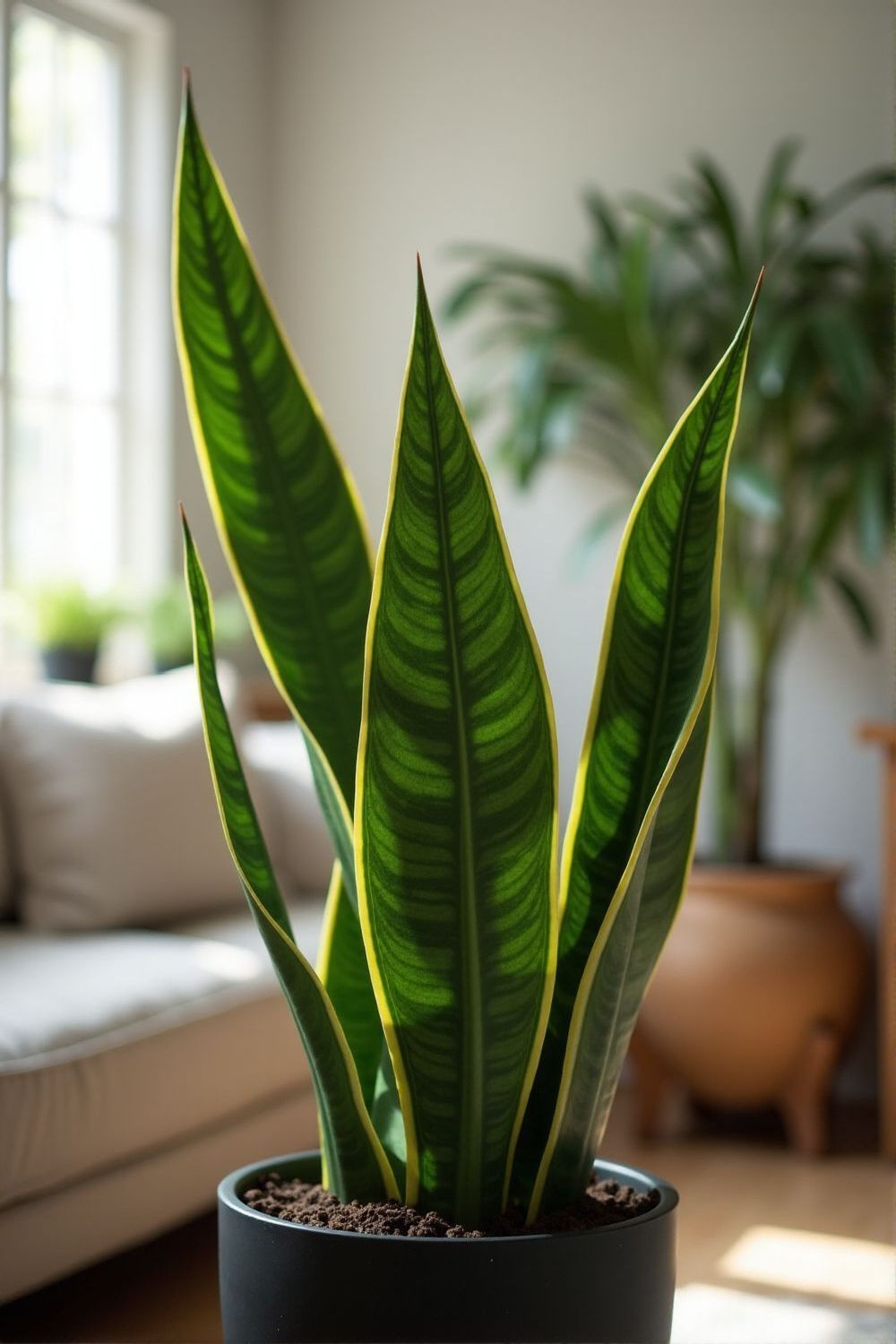
The Snake Plant, also known as Sansevieria, is a resilient and popular choice for indoor gardening. Its tall, sword-shaped leaves come in various shades of green, often with yellow edges, making it a striking addition to any room.
The Snake Plant, also known as Sansevieria, is a resilient and popular choice for indoor gardening. Its tall, sword-shaped leaves come in various shades of green, often with yellow edges, making it a striking addition to any room.
- Low maintenance and drought-tolerant, requiring minimal watering.
- Helps improve indoor air quality by filtering toxins and releasing oxygen.
- Thrives in low light conditions, making it ideal for apartments and offices.
- May grow up to four feet tall, providing height and structure to indoor spaces.
- Compatible with various decor styles, from modern to traditional, enhancing any interior.
One of the most appealing aspects of the Snake Plant is its low maintenance requirements. It thrives on neglect, requiring little water and adapting well to a range of lighting conditions.
Whether placed in direct sunlight or low light, it will continue to grow.
Watering is simple; just let the soil dry out between waterings.
Overwatering can lead to root rot, so it’s best to err on the side of caution. This plant does not need frequent feeding, making it perfect for busy individuals.
Another benefit is its air-purifying abilities. Snake Plants can filter toxins from the air, promoting a healthier living space.
At night, they even release oxygen, enhancing your indoor air quality while you sleep.
With its strong and upright growth, the Snake Plant can reach heights of over four feet.
It’s an excellent choice for adding height to your plant collection. Plus, it can be propagated easily by dividing the rhizomes, allowing you to grow more plants with minimal effort.
3. Pothos
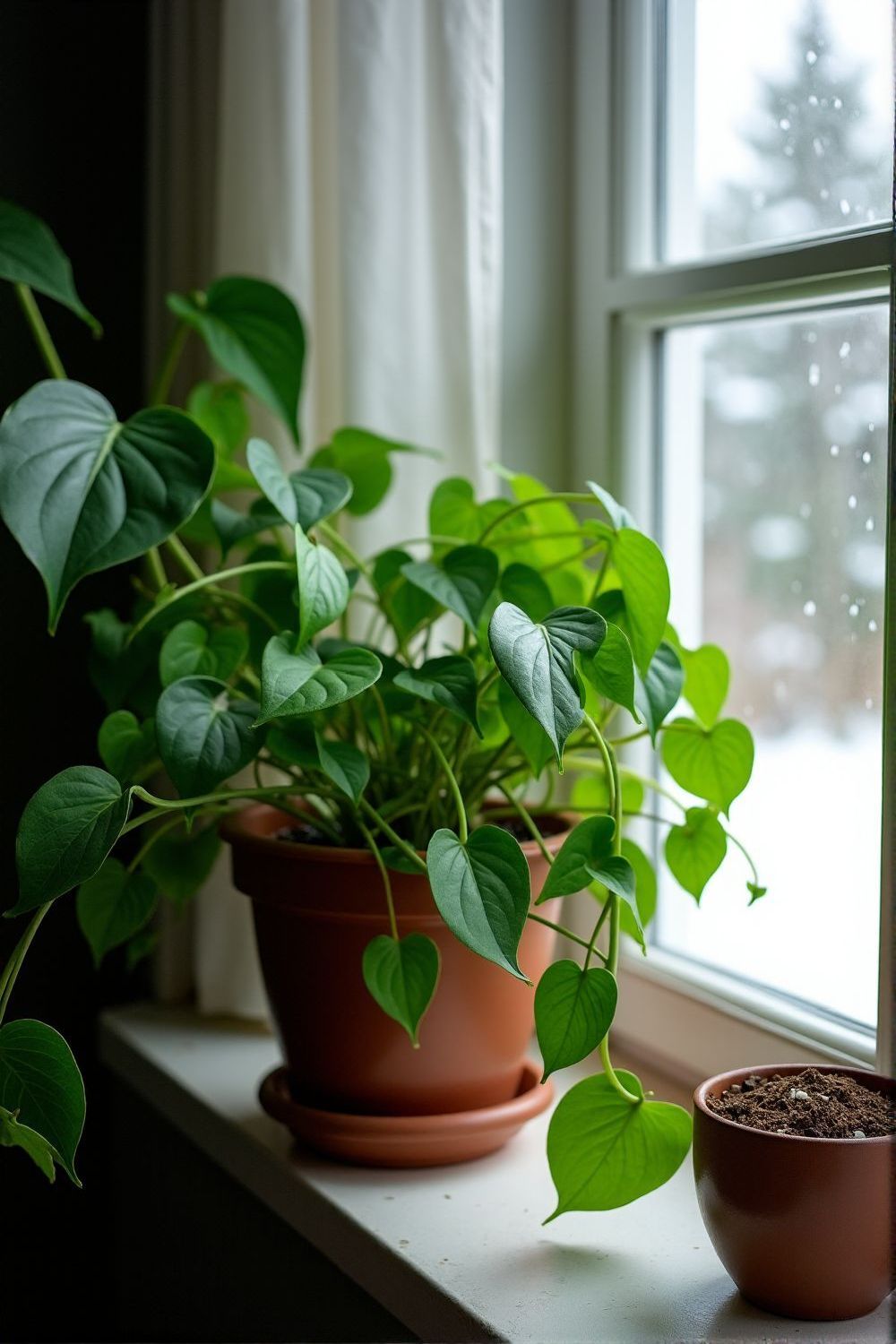
Pothos, often called Epipremnum aureum, is a popular choice among houseplant lovers. Its heart-shaped leaves can come in various shades of green, and some varieties even feature lovely variegation with gold or white markings.
Pothos grows quickly, making it a joy to watch as it fills up spaces and adds life to your home.
This plant is famous for being low-maintenance, which is one of its best traits.
It can adapt to different lighting situations, from low light to bright indirect sunlight. Though it prefers brighter spots, it will do just fine in shadier areas of your home.
Watering is straightforward; allow the top inch of soil to dry out before giving it a drink. Overwatering can cause the roots to rot, so always check first.
Pothos can also thrive in less-than-perfect conditions, making it great for beginners.
One fun feature is that you can propagate Pothos easily.
Pothos is an excellent houseplant choice for both novice and experienced gardeners alike. Here are some key points about its care and benefits:
- Pothos can tolerate low light conditions, making it suitable for various indoor environments.
- It requires minimal watering, as it can survive in dry soil for extended periods.
- The plant helps purify indoor air by removing toxins, contributing to a healthier living space.
- Its trailing vines can be trained to grow along trellises or allowed to cascade from shelves, adding a decorative touch.
- Propagation is simple; just cut a stem with a few leaves and place it in water or soil to grow a new plant.
Just take a cutting from a healthy vine, place it in water, and wait for roots to grow. Soon, you’ll have a brand new plant to enjoy or share!
This makes Pothos not only a beautiful addition to your home but also a fun project.
Pothos is also known for its ability to improve air quality.
It filters out toxins, helping to create a healthier indoor environment. With minimal care and speedy growth, it’s an excellent choice for anyone looking to bring some greenery into their living space.
4. ZZ Plant
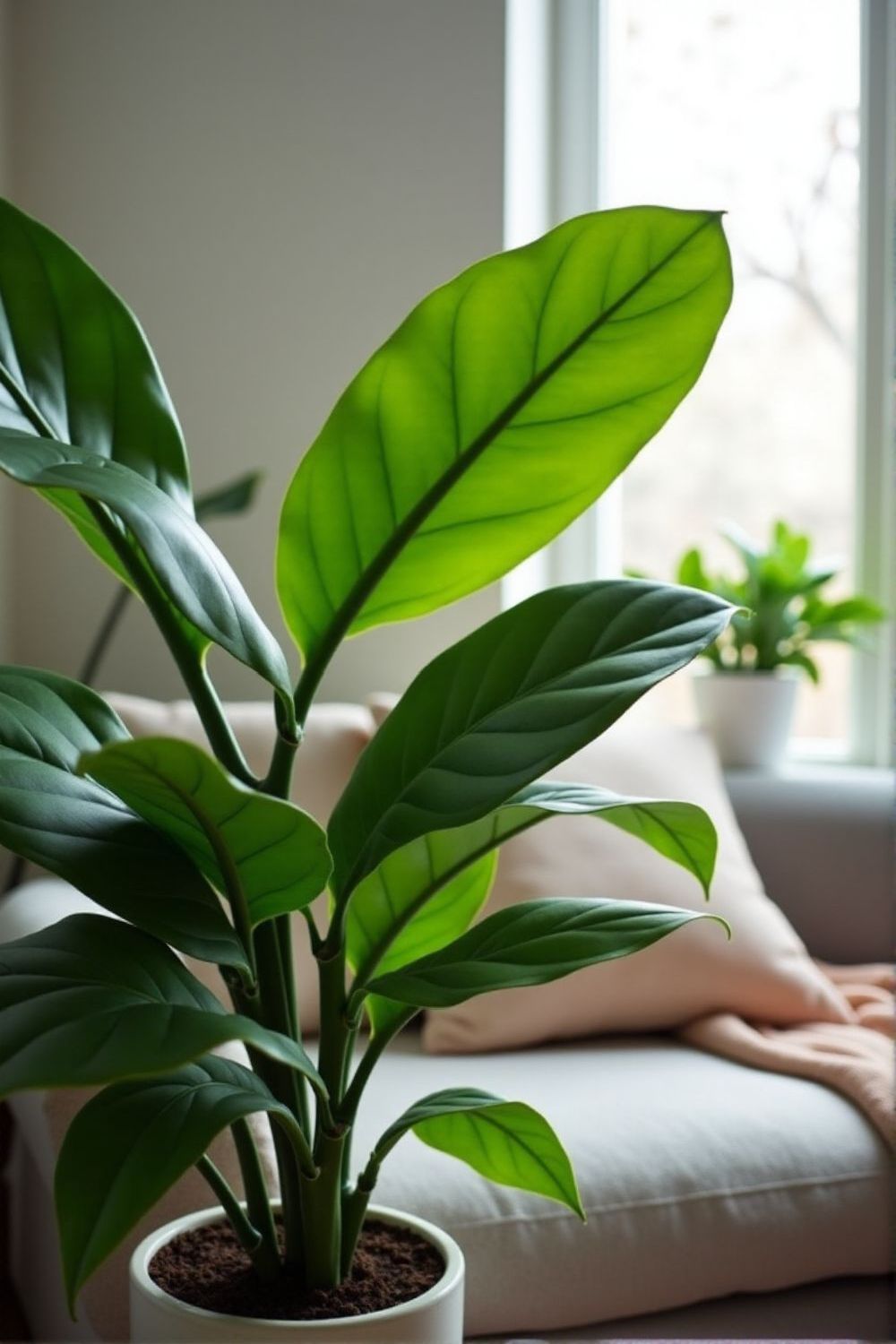
The ZZ Plant, or Zamioculcas zamiifolia, is a great choice for those seeking a low-maintenance houseplant. Its glossy, dark green leaves give a touch of elegance to any room.
This plant is very forgiving and can tolerate neglect, making it perfect for busy individuals or those new to gardening.
One of the best features of the ZZ Plant is its ability to thrive in low light.
It can adapt to various indoor environments without any fuss. You won’t need to stress about finding the ideal spot for it.
While it grows well in bright, indirect sunlight, it can also handle dimmer areas without much difficulty.
Watering is simple with a ZZ Plant.
Allow the soil to dry out completely between watering sessions. Overwatering is a common mistake, as this can lead to root rot.
Just remember to check the soil moisture first, and then give it a drink when it’s dry.
Another fantastic quality of the ZZ Plant is its air-purifying capability.
It can absorb toxins from the air, which helps to create a cleaner indoor atmosphere. As it grows, it adds character and vibrancy to your home.
You can enjoy its striking foliage while knowing that it requires minimal care.
5. Peace Lily
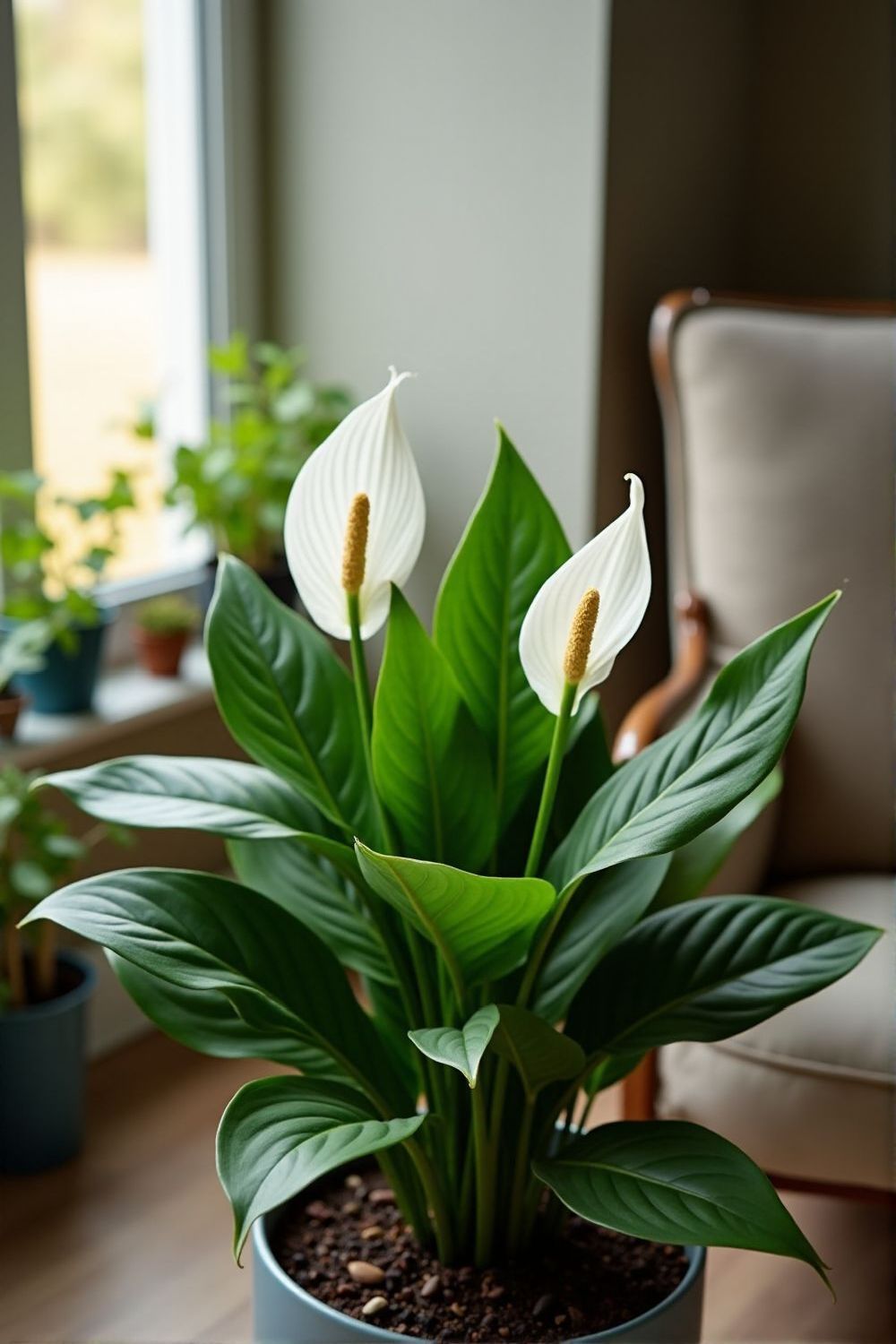
The Peace Lily, known scientifically as Spathiphyllum, is a beautiful and elegant plant that many people love to have in their homes. With its stunning white blooms and glossy green leaves, it adds a lovely touch to any room.
One of the best aspects of the Peace Lily is how easy it is to care for. It can thrive in various lighting conditions but prefers bright, indirect light.
If it’s placed in a darker spot, it may still survive, although it might not bloom as often.
When it comes to watering, the Peace Lily is fairly forgiving.
Just allow the top inch of soil to dry out before giving it water. If the leaves start to droop, that’s a sign it needs a drink.
However, make sure not to overwater, as this can cause root rot.
This plant is well-known for its air-purifying qualities.
It can help remove harmful toxins from the air, making it a great choice for indoor spaces. Additionally, it will even produce beautiful flowers under the right conditions, adding extra charm.
With minimal effort, your Peace Lily can thrive and bring beauty to your home. Enjoy the elegance it offers while you appreciate its ability to enhance the air quality around you!
Frequently Asked Questions
Here are some frequently asked questions about the easiest houseplants to keep alive, as discussed in our blog post.
1. What makes the Spider Plant a good choice for beginners?
The Spider Plant is ideal for beginners due to its hardiness and resilience. It can adapt to various indoor conditions and thrives in a range of lighting, from low light to bright indirect sunlight. Additionally, it has low water requirements, making it forgiving if you occasionally forget to water it.
Another advantage is its ability to purify the air by removing toxins, creating a healthier environment. With these qualities, the Spider Plant is a perfect starter plant for new gardeners.
2. How do I care for a Snake Plant?
The Snake Plant is incredibly low maintenance, which is why it’s popular among houseplant enthusiasts. It requires minimal watering, as it thrives on neglect; just let the soil dry out completely before watering again. It can adapt to different lighting conditions, from direct sunlight to low light.
This plant also has air-purifying properties, filtering toxins from the air and releasing oxygen, especially at night. With its striking appearance and easy care, the Snake Plant is an excellent addition to any indoor space.
3. Can Pothos thrive in low light?
Yes, Pothos is well-known for its ability to adapt to different lighting situations, including low light. While it prefers bright, indirect sunlight for optimal growth, it can still thrive in shadier areas of your home. This flexibility makes it a suitable choice for various environments, such as apartments or offices.
Pothos also requires minimal watering; allowing the top inch of soil to dry out before watering helps prevent root rot. Its adaptability and low maintenance needs make Pothos a favorite among both novice and experienced plant lovers.
4. What is unique about the ZZ Plant?
The ZZ Plant is unique for its glossy, dark green leaves and its high tolerance for neglect. It thrives in low light conditions, making it perfect for those who may not have the ideal bright spaces in their homes. This plant can adapt well to a variety of indoor environments without fussing over its positioning.
Watering is straightforward as well; you should allow the soil to dry out completely between watering sessions to prevent root rot. Moreover, the ZZ Plant is renowned for its air-purifying abilities, helping to enhance the air quality within your living space.
5. How often should I water a Peace Lily?
Watering a Peace Lily involves allowing the top inch of soil to dry out before giving it water. If you notice the leaves starting to droop, that’s an indication that it needs hydration. However, it’s crucial to avoid overwatering, as this can lead to root rot and harm the plant’s health.
The Peace Lily thrives in a variety of lighting conditions but prefers bright, indirect light for optimal bloom. With its stunning white flowers and air-purifying qualities, it can bring beauty and cleanliness to your home.
6. Are these houseplants safe for pets?
While many of the listed houseplants are easy to care for, some may not be safe for pets. For instance, Peace Lilies can be toxic to cats and dogs if ingested. It’s important to research each plant’s potential toxicity before bringing them into a home with pets.
Spider Plants and Snake Plants are generally considered safe for pets, making them good options for pet owners. Always consult with a veterinarian if you have concerns about the safety of any houseplants you are considering.
7. How can I propagate these houseplants?
Propagation methods vary among the houseplants mentioned, but many are quite simple. For example, Pothos can be propagated by cutting a healthy vine and placing it in water until roots form. Spider Plants produce “pups” that can also be easily propagated and shared.
Snake Plants can be propagated by dividing the rhizomes, while ZZ Plants can be propagated through leaf cuttings placed directly in soil. Understanding these techniques can enhance your plant collection and create a thriving indoor garden.
Conclusion
Adding houseplants to your home can be a fun and rewarding experience. The five plants we’ve discussed-Spider Plant, Snake Plant, Pothos, ZZ Plant, and Peace Lily-are all excellent choices for anyone looking to brighten their space without a lot of effort.
Each of these plants offers unique benefits, from improving air quality to bringing a touch of nature indoors. With their easy-care requirements, you can enjoy the beauty of greenery without feeling overwhelmed.
Whether you’re a beginner or just want to add some low-maintenance options to your collection, these houseplants can thrive and flourish in your home. Happy planting!